** Phrasal Verb:
Phrasal verbs are usually two-word phrases consisting of verb + adverb or verb + preposition. Think of them as you would any other English vocabulary. Study them as you come across them, rather than trying to memorize many at once. Use the list below as a reference guide when you find an expression that you don’t recognize. The example sentences will help you understand the meanings. If you think of each phrasal verb as a separate verb with a specific meaning, you will be able to remember it more easily. Like many other verbs, phrasal verbs often have more than one meaning.
1. A phrasal verb is a verb plus a preposition or adverb which creates a meaning different from the original verb.
> Example:
- I ran into my teacher at the movies last night. run + into = meet
- He ran away when he was 15. run + away = leave home
2. Some phrasal verbs are intransitive. An intransitive verb cannot be followed by an object.
- He suddenly showed up. “show up” cannot take an object
3. Some phrasal verbs are transitive. A transitive verb can be followed by an object.
> Example:
- I made up the story. “story” is the object of “make up”
4. Some transitive phrasal verbs are separable. The object is placed between the verb and the preposition. In this Phrasal Verb Dictionary, separable phrasal verbs are marked by placing a * between the verb and the preposition / adverb.
- I talked my mother into letting me borrow the car.
- She looked the phone number up.
5. Some transitive phrasal verbs are inseparable. The object is placed after the preposition. In this Phrasal Verb Dictionary, inseparable phrasal verbs are marked by placing a + after the preposition / adverb.
- I ran into an old friend yesterday.
- They are looking into the problem.
6. Some transitive phrasal verbs can take an object in both places. In this Phrasal Verb Dictionary, such phrasal verbs are marked with both * and + .
- I looked the number up in the phone book.
- I looked up the number in the phone book.
7. WARNING! Although many phrasal verbs can take an object in both places, you must put the object between the verb and the preposition if the object is a pronoun.
- I looked the number up in the phone book.
- I looked up the number in the phone book.
- I looked it up in the phone book. correct
- I looked up it in the phone book. incorrect
Also try our Verb + Preposition Dictionary to look up standard verb + prepostion combinations.

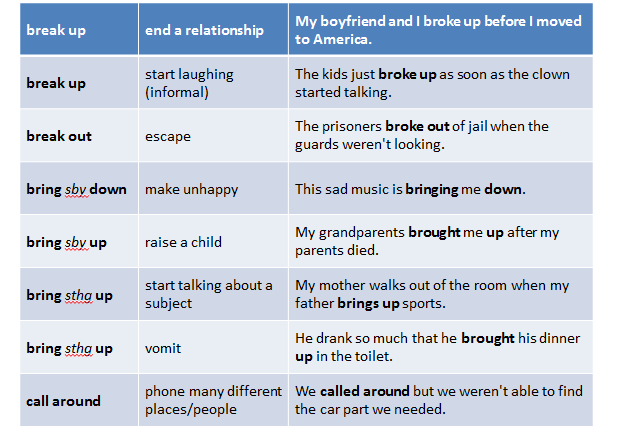



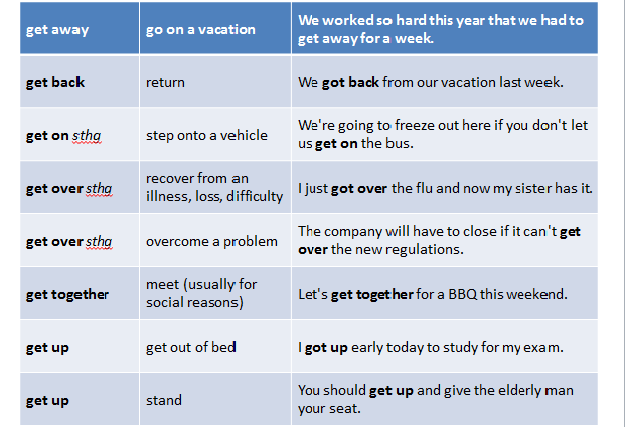

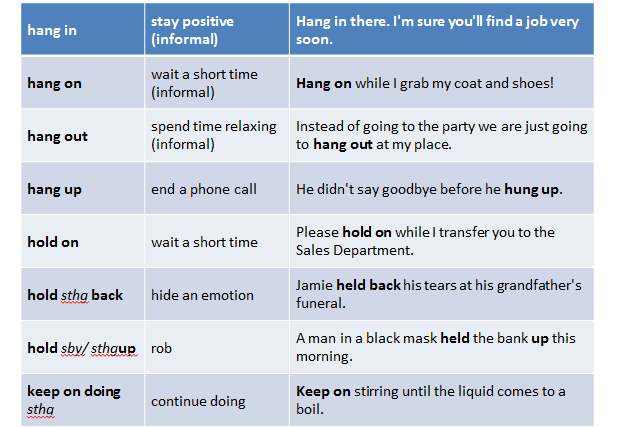

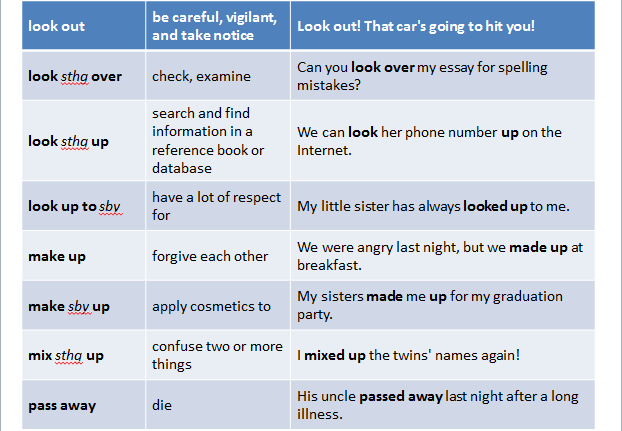




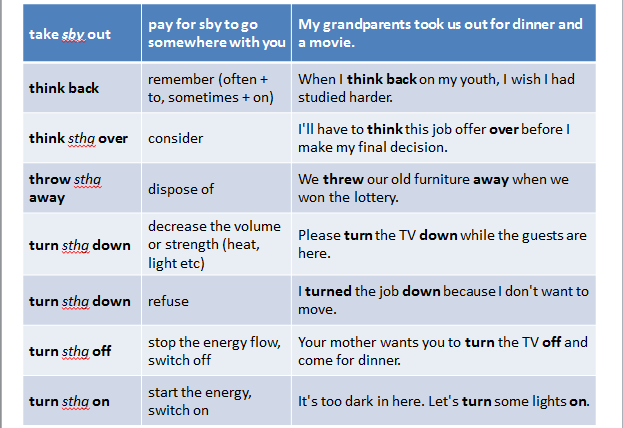

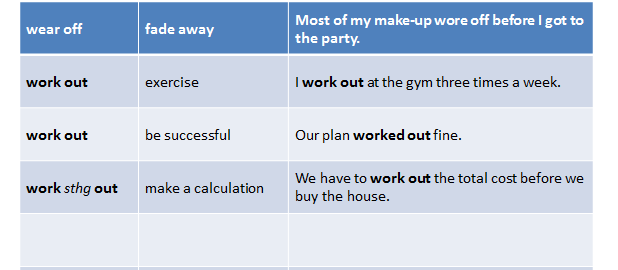
# Some Pictures:

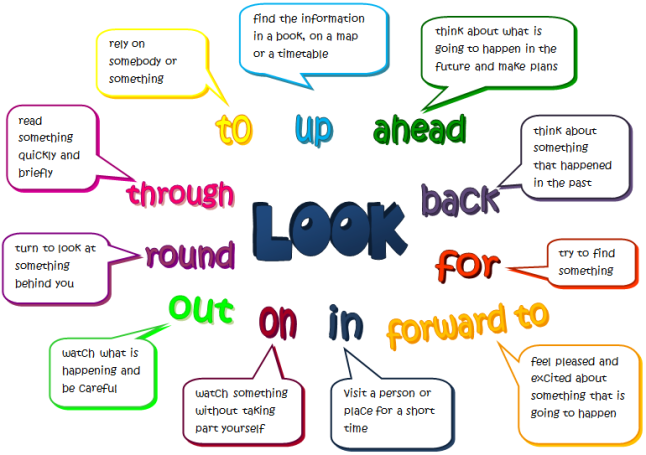

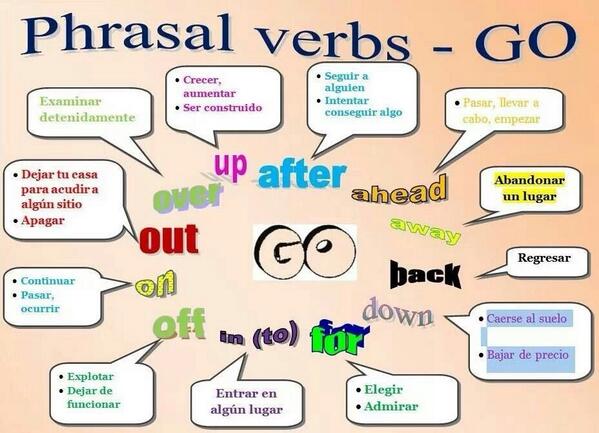


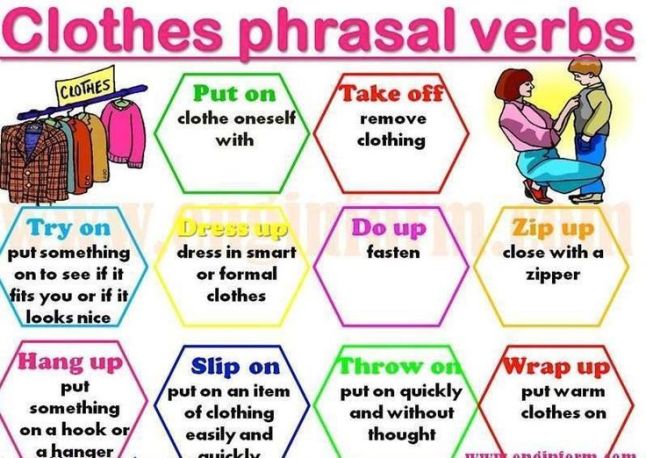

# Link:
